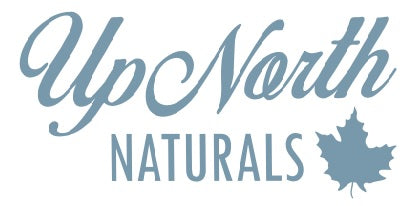
Share
Curly hair requires consistent attention to maintain its shape, strength, and moisture balance. Managing curls is not just about styling—it’s about creating a sustainable, nourishing haircare routine. One approach that continues to gain attention is the use of targeted scalp treatments, particularly those built around an 8-oil blend and rosemary scalp therapy. These combinations offer support from the roots, making them a useful addition to curly hair care plans.
Understanding Curly Hair and Scalp Needs
Characteristics of Curly Hair
Curly hair naturally experiences more dryness compared to straight or wavy hair. The coil pattern restricts the movement of natural oils from the scalp along the hair shaft. This makes it prone to tangles, breakage, and moisture loss. These characteristics require more structured care that begins at the scalp.

Importance of Scalp Health in Curly Hair
Healthy hair starts with a healthy scalp. For curls to grow strong and maintain definition, the scalp must remain clear of buildup and well-moisturized. This is where treatments like rosemary scalp therapy and oil blends are useful—they help maintain a stable environment for hair growth.
What Is the 8-Oil Blend Magic?
Composition of the Oil Blend
An 8-oil blend typically includes a combination of:
-
Rosemary oil
-
Jojoba oil
-
Argan oil
-
Coconut oil
-
Castor oil
-
Olive oil
-
Tea tree oil
-
Avocado oil
Each oil contributes differently—some offer moisture, others support scalp health, and a few strengthen the hair shaft. The goal is not to overwhelm the scalp but to provide a balance of nutrients and hydration.
Why Use a Blend Instead of a Single Oil?
Single oils provide specific benefits, but when combined in a well-balanced formula, they can address multiple issues at once. For instance, castor oil may support stronger hair strands, while tea tree oil can help reduce scalp flakiness. Together, they provide a complete care solution for textured hair.
Rosemary Scalp Therapy in Curly Hair Care
Role of Rosemary in Scalp Maintenance
Rosemary oil is often included in scalp care due to its circulation-supporting properties. Applied topically, it can help improve blood flow to the follicles, which may assist in maintaining active and healthy roots.
Addressing Common Scalp Issues
Curly hair types often deal with itchy or dry scalps due to infrequent shampooing or product buildup. Rosemary oil, when applied in a diluted formula or as part of an oil blend, may reduce visible flakes and discomfort. It helps clear pores and allows other nourishing ingredients to work more effectively.

How to Use the 8-Oil Blend and Rosemary Therapy in a Haircare Routine
Pre-Wash Scalp Treatment
The 8-oil blend can be used as a pre-wash treatment. Apply directly to the scalp and massage gently for 5–10 minutes. Allow it to sit for at least 30 minutes before shampooing. This pre-treatment phase helps break down scalp buildup and moisturize the skin.
Weekly Scalp Massage Practice
Incorporate rosemary therapy once or twice a week. Consistency helps maintain circulation and keeps the scalp conditioned. Use only a small amount of product, and avoid oversaturating the scalp to prevent greasy buildup.
Leave-in Applications
Some blends are lightweight enough to be used as leave-in treatments. When used in small amounts, they can hydrate the scalp between wash days. Focus application on dry areas or use to spot-treat irritation.
Curly Hair Maintenance Beyond Scalp Care
Cleansing Methods
A good haircare routine for curls often includes sulfate-free shampoos or co-washing. These methods are less likely to strip away natural oils. When used in combination with an oil blend therapy, they help maintain a clean but hydrated scalp.
Conditioning and Moisturizing
After scalp treatment and washing, follow up with a deep conditioner. Moisture retention is key to curl integrity. A balanced routine should always include hydration and sealing steps. Use cream-based products or light oils that do not weigh the hair down.
Styling Without Causing Build-Up
Avoid layering too many styling products on top of oil-based treatments. Choose gels or creams that are water-soluble. This reduces buildup and ensures your scalp treatments are not blocked by heavy product residue.

Monitoring Scalp and Hair Response
Signs of Effective Treatment
You may notice less flakiness, reduced itchiness, and improved curl elasticity after regular use of rosemary scalp therapy. These are signs that your scalp is maintaining better moisture and circulation levels.
Adjusting the Frequency
Not all curly hair types need oil treatments at the same rate. Low-porosity hair, for example, may become weighed down with heavy oils. Start with once a week and adjust based on how your hair and scalp respond.
Building a Sustainable Haircare Routine
Schedule and Consistency
A successful haircare routine includes regular scalp treatments, cleansing, conditioning, and protective styling. Use a schedule that fits your lifestyle—this could mean oiling once per week and deep conditioning bi-weekly.
Seasonal Adjustments
Colder weather may require more frequent scalp oiling, while summer months might call for lighter products. Be prepared to adjust product usage depending on temperature, humidity, and your scalp’s condition.
Key Points to Remember
-
Curly hair care begins at the scalp.
-
The 8-Oil Blend Magic: Rosemary Scalp Therapy for Curly Hair Care combines multiple benefits in one treatment.
-
Use it in moderation to avoid buildup, especially for low-porosity hair.
-
A structured haircare routine improves long-term curl health and definition.
-
Scalp massage and consistency are essential for optimal results.
Final Thoughts
Curly hair maintenance isn’t just about outer appearance—it starts with how well you support the scalp. Integrating a well-formulated 8-oil blend with rosemary scalp therapy into your regular haircare routine provides a foundation for healthy, resilient curls. As with any hair regimen, patience and consistency matter most. Monitor your scalp’s response and adjust your approach based on what works best for your texture and lifestyle.
